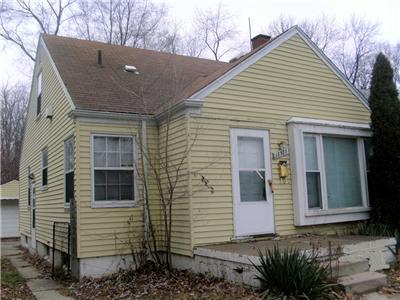
One out of every 13 houses in Cleveland is vacant. Many of the properties are derelict, but speculators still buy them in bulk.
Photo: Reuben Cox for The New York Times
TONY BRANCATELLI, A CLEVELAND CITY COUNCILMAN, yearns for signs that something like normal life still exists in his ward. Early one morning last fall, he called me from his cellphone. He sounded unusually excited. He had just visited two forlorn-looking vacant houses that had been foreclosed more than a year ago. They sat on the same lot, one in front of the other. Both had been frequented by squatters, and Brancatelli had passed by to see if they had been finally boarded up. They hadn’t. But while there he noticed with alarm what looked like a prone body in the yard next door. As he moved closer, he realized he was looking at an elderly woman who had just one leg, lying on the ground. She was leaning on one arm and, with the other, was whacking at weeds with a hatchet and stuffing the clippings into a cardboard box for garbage pickup. “Talk about fortitude,” he told me. In a place like Cleveland, hope comes in small morsels.
The next day, I went with Brancatelli to visit Ada Flores, the woman who was whacking at the weeds. She is 81, and mostly gets around in a wheelchair. Flores is a native Spanish speaker, and her English was difficult to understand, especially above the incessant barking of her caged dog, Tuffy. But the story she told Brancatelli was familiar to him. Teenagers had been in and out of the two vacant houses next door, she said, and her son, who visits her regularly, at one point boarded up the windows himself. “Are they going to tear them down?” she asked. Brancatelli crossed himself. “I hope so,” he mumbled.
Prayer and sheer persistence are pretty much all Brancatelli has to go on these days. Cleveland is reeling from the foreclosure crisis. There have been roughly 10,000 foreclosures in two years. For all of 2007, before it was overtaken by sky-high foreclosure rates in parts of California, Nevada and Florida, Cleveland’s rate was among the highest in the country. (It’s now 24th among metropolitan areas.) Vacant houses are not a new phenomenon to the city. Ravaged by the closing of American steel mills, Cleveland has long been in decline. With fewer manufacturing jobs to attract workers, it has lost half its population since 1960. Its poverty rate is one of the highest in the nation. But in all those years, nothing has approached the current scale of ruin.
And in December, just when local officials thought things couldn’t get worse, Cuyahoga County, which includes Cleveland, posted a record number of foreclosure filings. The number of empty houses is so staggeringly high that no one has an accurate count. The city estimates that 10,000 houses, or 1 in 13, are vacant. The county treasurer says it’s more likely 15,000. Most of the vacant houses are owned by lenders who foreclosed on the properties and by the wholesalers who are now sweeping in to pick up houses in bulk, as if they were trading in baseball cards.
http://www.nytimes.com/2009/03/08/ma...t.html?_r=1&hp
 At least that is one thing that I can look forward to during the economic collapse - free housing!
At least that is one thing that I can look forward to during the economic collapse - free housing!

Comment